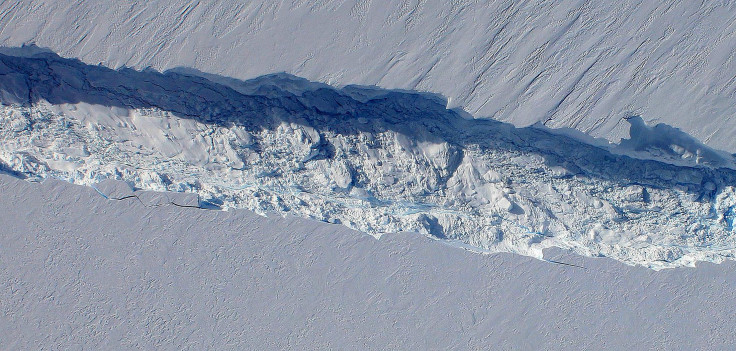Pine Island Glacier Melting Reaches ‘Irreversible’ Level, Antarctic Ice Water ‘Flowing Faster’ Into The Ocean

Pine Island Glacier’s slow death is old news to most, but a new analysis of Antarctica’s massive ice sheet suggests the ice is melting much faster now and that the damage is “irreversible.” Research shows the massive 68,000-square-mile sheet of ice, believed to be the biggest single contributor to sea-level rise in Antarctica, has begun to shed water at a rate not seen before.
An international team of scientists from the CSC-IT Center for Science in Finland, the Chinese Academy of Sciences and the Universities of Exeter and Bristol combined field observations and computer models to forecast how the ice will change over the coming decades. They concluded that the Pine Island Glacier has “started a phase of self-sustained retreat and will irreversibly continue its decline,” according to Gael Durand, a glaciologist from France. Scientists believe the glacier is capable of losing up to 100 billion tons of water a year, the equivalent of about a 10mm rise in global sea levels by 2034.
“The Pine Island Glacier shows the biggest changes in this area at the moment, but if it is unstable, it may have implications for the entire West Antarctic Ice Sheet," Dr. G. Hilmar Gudmundsson, who works for the British Antarctic Survey and was a researcher on the project, said in a statement. “At the Pine Island Glacier, we have seen that not only is more ice flowing from the glacier into the ocean, but it's also flowing faster across the grounding line -- the [underwater] boundary between the grounded ice and the floating ice. We also can see this boundary is migrating further inland.”
Gudmundsson and the rest of the team analyzed the glacier’s grounding line, and according to the study, published Sunday in the journal Nature Climate Change, this line has receded 10 kilometers in the past 10 years and is likely to retreat an additional 30 kilometers over the upcoming decades.
“Not only is more ice flowing from the glacier into the ocean, but it's also flowing faster,” Gudmundsson said.
Scientists have long looked at the Pine Island Glacier as a kind of litmus test for global warming. According to Live Science, the glacier is the fastest- and longest-changing glacier on the West Antarctic Ice Sheet. Rising global temperatures are believed to be thinning Antarctica’s ice sheets, including the Pine Island Glacier, which has had several events of iceberg calving – when icebergs break off from an ice sheet and float out to sea – over the years, including a dramatic calving last year of an iceberg larger than Chicago.
While calving itself does not directly contribute to rising sea levels – the ice was already in the water – scientists warn that if Pine Island Glacier continues to splinter and shrink, it could spell trouble for Earth’s oceans.
“The Pine Island Glacier currently acts as a plug, holding back part of the immense West Antarctic Ice Sheet whose melting ice contributes to rising sea levels,” Live Science noted in July 2013.
© Copyright IBTimes 2024. All rights reserved.












